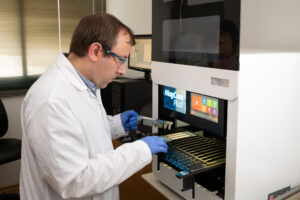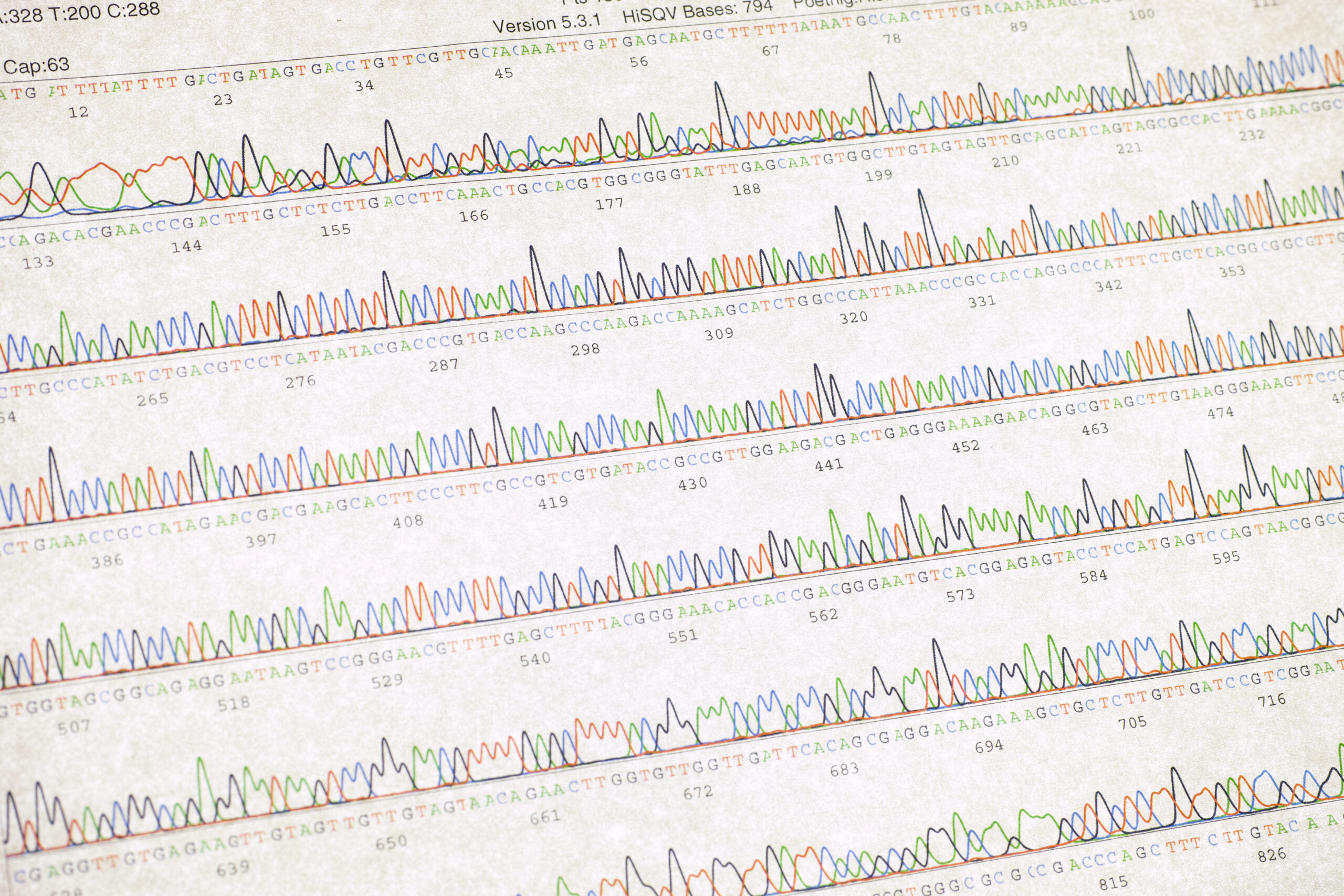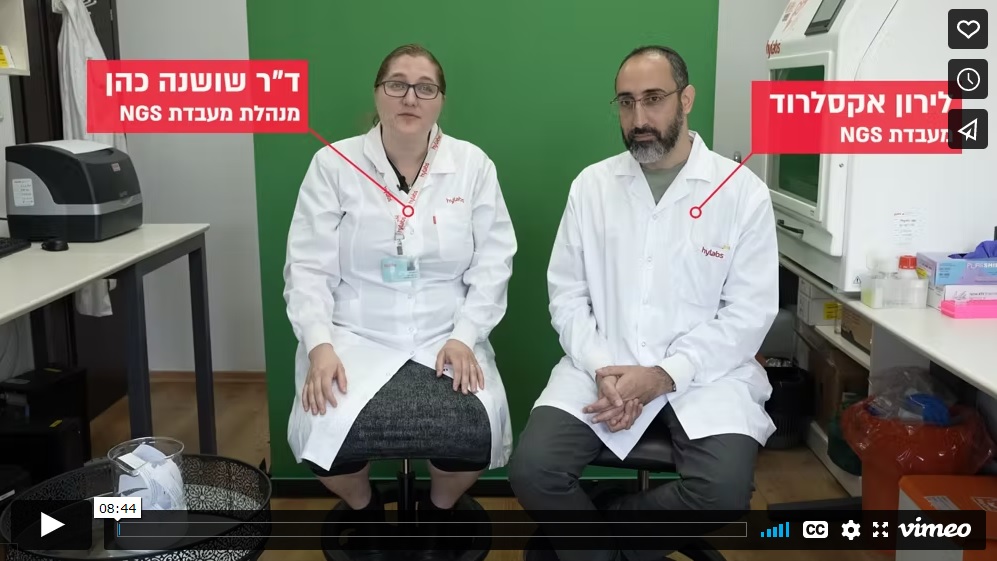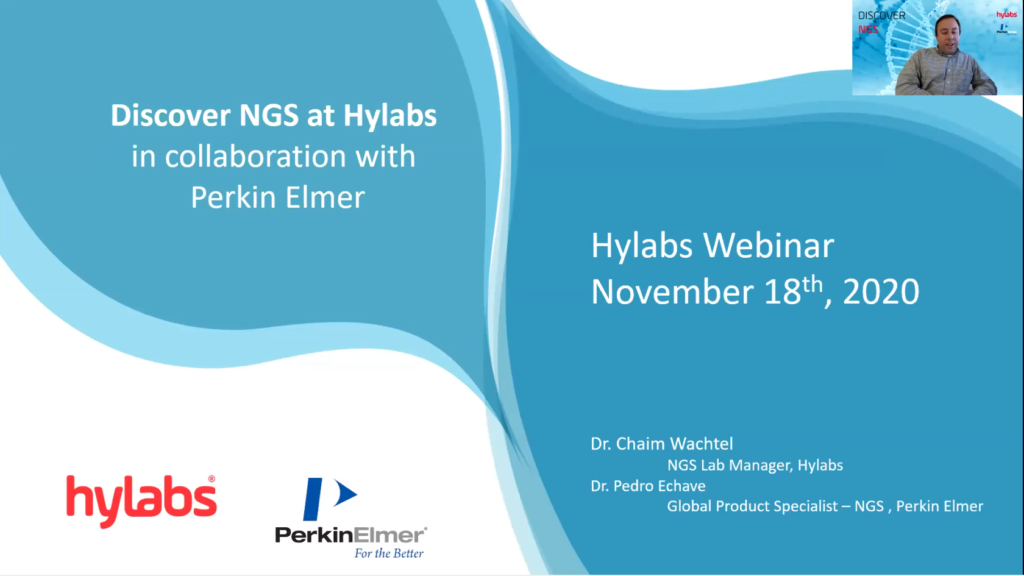The use of Next Generation Sequencing (NGS) as the tool for Microbiome analysis has become the gold standard in the field and changed it entirely. In this article you can find a short description of the methods we use in our NGS lab.
By Dr. Chaim Wachtel, NGS Lab Manager, hylabs
The microbiome is the community of organisms living in a sample, for example the Gut Microbiome, is the community of microorganisms in your gut, there is an entire community of bacteria living inside of us, helping us in our daily lives.
Next Generation Sequencing (NGS) is a massively parallel system in which you have one reaction, one test tube with thousands of different pieces of DNA, and all thousands of these fragments get sequenced giving you thousands, or millions of different answers. NGS has revolutionized research in the biological sciences, with its ultra-high throughput, scalability and speed. This revolution has allowed researchers to perform a wide variety of applications and to develop new ways to study biological systems like never before.
The use of Next Generation Sequencing (NGS) as the tool for Microbiome analysis has become the gold standard in the field. The ability to sequence complex samples, containing many different microorganisms, without the need to isolate the different organisms, has changed the entire field. It is now routine to sequence the microbiome of different sample types in all fields of research. There are two different approaches to Microbiome studies using NGS, amplicon sequencing or metagenomic sequencing. Our NGS lab offers 16s, 18s, and ITS microbiome services as well as metagenomic sequencing. Our staff can help you with your project, from DNA extraction, to library preparation, sequencing and analysis.
changed the entire field. It is now routine to sequence the microbiome of different sample types in all fields of research. There are two different approaches to Microbiome studies using NGS, amplicon sequencing or metagenomic sequencing. Our NGS lab offers 16s, 18s, and ITS microbiome services as well as metagenomic sequencing. Our staff can help you with your project, from DNA extraction, to library preparation, sequencing and analysis.
Typical samples used in microbiome studies include (but are not limited to): Fecal samples, oral and skin swabs soil, water and other environmental samples, surface swabs.
There are a few differences between the two approaches, including but not limited to:
• Library construction protocol- Amplicon based or Whole Genome
• Amount of data required- In general amplicon-based microbiome analysis requires less data per sample, as you are using a single gene to identify the different microorganisms.
• Analysis- The basis of the analysis in the two approaches is similar, looking for sequences that can identify the microorganisms in the sample. While the amplicon-based approach requires smaller databases, for example of 16s sequences, the metagenomic approach may take longer, but should allow you to get better resolution in your identification.
While there is no right or wrong choice, our NGS staff is happy to help you with planning your experiments.
Crucial steps and tips for a successful amplicon (16s, 18s, ITS) microbiome project
• DNA Extraction
o The most important step in the entire process. No matter what your starting material is, if the extraction method chosen is does not work well, you will not get good results.
o We use the Magcore Plus II with the Genomic DNA Tissue kit. Prior to the Proteinase K treatment, samples are placed in Geneaid Type C beadbeating tubes and subjected to bead-beating. The bead-beating step is crucial for successful bacterial DNA extraction from fecal or soil samples, and we use it for almost all our microbiome projects, no matter what type of starting material.
• Amplicon Library prep
o We use a two-step PCR protocol to generate amplicon libraries for Illumina sequencing. In the first PCR we amplify a region of either 16s, 18s or ITS. The primers we use are adapted from the Earth Microbiome Project, to make them compatible with commercial adaptors. In the second PCR the index and adaptor sequences required for Illumina sequencing are added.
o 10-20 ng of DNA are used as a template for the first PCR reaction.
o After the second PCR the samples are cleaned using SPRI beads and then concentrations are measured using the Denovix HS DNA assay. The size of the libraries is verified by Tapestation analysis, and then the samples are ready to load on the Illumina Miseq.
• Sequencing
o After the samples pass our QC, they are loaded on the Illumina Miseq. For microbiome work, we typically aim for 25,000 reads per sample, prior to analysis, but there are always options to generate more data per sample.
o The key to a successful sequencing run includes adding the correct amount of Phi X to increase diversity and lowering the molar amount of sample loaded to decrease the density on the flow cell.
o OTU and abundance tables along with the raw data (FASTQ files) are sent to each customer.
Watch Now
Common Q&A regarding the NGS service:
Not Just a Service Lab
Over the last five years, the NGS lab (Next Generation Sequencing) at Hylabs has had the privilege to partake in two different research projects exploring the predictive powers of the gut microbiome.
Can your gut microbiome predict the outcome of Bariatric surgery?
Five years ago, Hylabs, in collaboration with Genewiz, were awarded a grant by the Israel-U.S. Binational Industrial Research and Development Foundation (BIRD Foundation), to study the connection between bariatric surgery and the microbiome.
In the worldwide fight against obesity and diabetes, Bariatric surgery has become one of the doctors chosen tools, with ~800,000 cases per year worldwide. While, the surgery has become almost routine, the outcome is highly variable. The ability to predict the long-term Body Mass Index (BMI) change following surgery has important implications on individuals and the health care system in general. Given the tight connection between eating habits, sugar consumption, BMI and the gut microbiome, we tested whether a person’s gut microbiome profile before surgery is associated with different outcomes. We found, by projecting the gut microbiome composition into principal components, that the three different groups studied: lean, obese, and obese who underwent bariatric surgery have different microbiome profiles. The projection showed that distinct profiles for all three groups, with the obese after surgery group being more different from lean than the obese. The same projection allowed for the prediction of BMI loss following surgery, using the pre-surgery microbiome profile.
Developing tools for the Food industry using Microbiome analysis
As part of a consortium studying large data collection in the food industry, Hylabs has developed a method for sampling and measuring the microbiome in the assembly line of factories preparing food.
Sampling different locations on the assembly line, performing Next Generation Sequencing (NGS) to identify the microbiome, and using mathematical modelling, allowed us to identify bacterial biomarkers that make it possible to give alerts of the danger of outbreaks of infections long before the outbreak has occurred, thus enabling the food company to maintain food safety and public safety.
We are now developing a fast method that will allow the biomarkers to be sampled by the quality control team of the food companies, as an advanced part of preventive activities in accordance with the new food quality and safety standard of the FDA.
The development and modeling in both projects were carried out in collaboration with Professor Omry Koren and Professor Yoram Louzoun from Bar Ilan University
For more details feel free to contact us: chaim@hylabs.co.il
To watch our NGS at hylabs webinar click here






